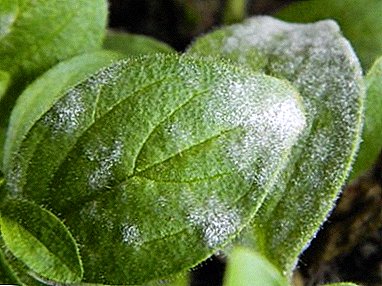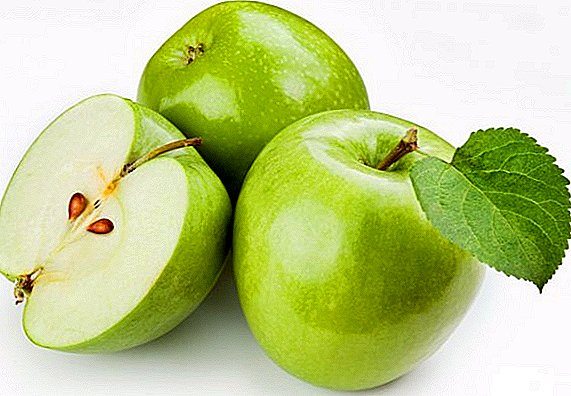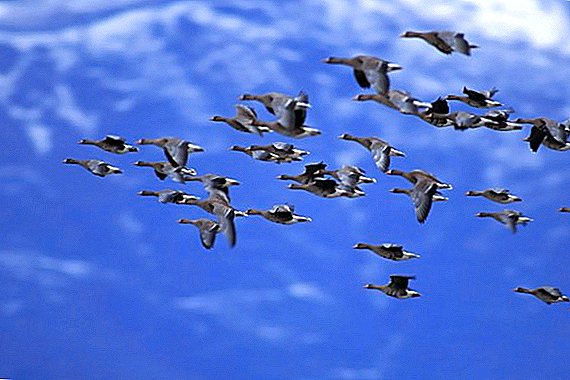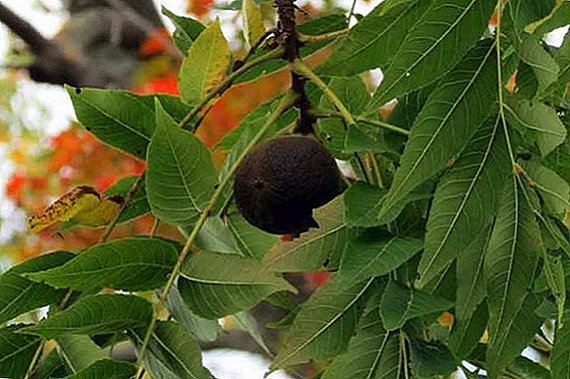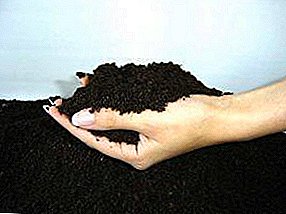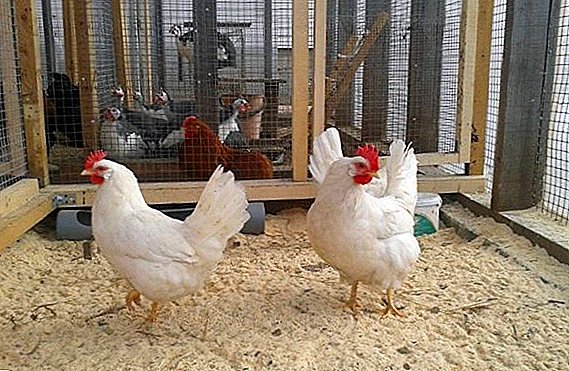 Very often, the cow ration includes what is popularly called shredded - a mixture of dry shredded grain with a high content of calories. Sometimes, a cow eats too much, which leads to problems with digestion. And any failure of food in livestock can lead to metabolic disorders and diseases. It is important for the owner of cattle to know what the crustaceans overeat at, how much food they need and how to deal with overeating if it has already manifested itself.
Very often, the cow ration includes what is popularly called shredded - a mixture of dry shredded grain with a high content of calories. Sometimes, a cow eats too much, which leads to problems with digestion. And any failure of food in livestock can lead to metabolic disorders and diseases. It is important for the owner of cattle to know what the crustaceans overeat at, how much food they need and how to deal with overeating if it has already manifested itself.
Signs of overeating in a cow
The main symptoms of disorders in the work of the stomach and overeating:
- the cow stops using regular food, chews little and refuses chewing gum;
- there is an increase in the left side (swelling), called in veterinary medicine "acute swelling of the scar";
- the animal becomes restless, sometimes aggressive, and sometimes vice versa - too sluggish and passive;
- abundant salivation begins;
- the cow stops getting up and is constantly lying - a symptom of a neglected disease;
- the animal begins to grit its teeth;
- dry nose and upper lip appear (they are wet when healthy);
- sometimes you can hear a moan when a cow tries to rise, as the pain increases;
- the temperature usually does not rise, but it may be a slight increase in some cases.
Important! To think that this problem will go away and the digestive system will cope without help. - big mistake. The disease only gets worse. It develops rapidly, after 3-5 days it becomes life threatening. If you do not urgently help the animal - the cow may die soon.
How is it dangerous
The problem of overeating often leads to inflammation of the scar, because the food eaten first gets into the scar. There lives a large number of beneficial bacteria that help it to digest. As a result of this process, gases appear that burst out.  If the cow has received too much food, or simply has uncontrolled access to food (namely, to crushed high-calorie cereals), then the food, falling into the scar, stops, hammering it. Because of this, gases can not freely go out and accumulate inside, the scar is clogged with food, and the stomach fails.
If the cow has received too much food, or simply has uncontrolled access to food (namely, to crushed high-calorie cereals), then the food, falling into the scar, stops, hammering it. Because of this, gases can not freely go out and accumulate inside, the scar is clogged with food, and the stomach fails.
Gradually, the food inside begins to rot and roam. A pathogenic microflora appears that kills beneficial bacteria that promote digestion. In parallel to release toxins entering the blood. They begin to spread throughout the body, gradually poisoning it.
Overeating threatens the emergence of another problem - lactic acidosis: it is a disease that destroys the liver. There is a lot of carbohydrates in ground cereals, such as corn, barley and other cereals that make up shreds.
Important! It is necessary to monitor not only the quantity, but also behind food quality. Even in small quantities, damaged cereal feeds can damage the animal. Bacteria contained in rotten food or grain with mold, entering the body, destroy its microflora, killing beneficial microbes. Their active development can lead to the same consequences as overeating.If they are processed incorrectly or their quantity is very large, as a result of their processing processes, the amount of lactic acid dangerous for the animal begins to be released.
Video: how cow scar works
What to do if a cow is full of crushed grain
There are several actions that can be taken personally to alleviate the condition of the animal. The use of certain medications is also recommended, but only after consulting a veterinarian.
We advise you to read about how to choose the right cow, how to feed a dairy and dry cow, what diseases can hurt cows and how to treat them, what are the ways of keeping cows, and also find out what the weight of cattle depends on.
First aid
The first thing a host should do is help the stomach to begin its work. To do this, it is recommended to drive a cow, make it active, run and warm up a little, as this stimulates the whole body.  Another first aid is washing. But washing out the scar is a rather difficult affair for a layman. To do this, you need a probe or a rubber hose at least 2.5-3 meters in length and 3-5 centimeters in diameter. The end is richly lubricated with grease or oil (light non-toxic ointment can be used).
Another first aid is washing. But washing out the scar is a rather difficult affair for a layman. To do this, you need a probe or a rubber hose at least 2.5-3 meters in length and 3-5 centimeters in diameter. The end is richly lubricated with grease or oil (light non-toxic ointment can be used).
Important! One of the highlights of the procedure - You need to make sure that the hose does not get into the trachea! Otherwise, you can not only injure the body itself, but also cause irreparable harm to the lungs. Care must be taken to give the characteristic smell of the scar (food, rot, belching and the like).
Then the most difficult thing is that the processed end should be pushed through the esophagus to the scar (approximately 1.5 meters deep). In this case, be sure to hold and calm the animal, talk to him. So it is better to take someone else with you to help with the procedure itself or to keep the cow in a stable position.  Next you need to pour 3 or 4 bulyonok buckets of simple water (better than room temperature), you can add a little tincture of chamomile or other herbs to improve and stimulate digestion.
Next you need to pour 3 or 4 bulyonok buckets of simple water (better than room temperature), you can add a little tincture of chamomile or other herbs to improve and stimulate digestion.
After that, the free edge just goes down - the water gradually begins to come out along with the accumulated content. If everything worked out - you can pour a little scar fluid, taken from a healthy cow. After - be sure to consult with your doctor.
But the flushing treatment does not end there. Next, be sure to give 2-3 tablespoons of soda diluted in 1 liter of water every day several times. This mixture neutralizes the acid from the stomach.
They also give a lot of warm water with simple baker's yeast: about 200-250 grams of yeast are diluted in 10 liters of warm water, the mixture is given several times a day. Another folk remedy is to give a cucumber pickle (twice a day, 8-10 liters at a time).
Did you know? Cows emit more gas than cars and even airplanes. The UN experts considered that the manure and gases of these animals make up one third of the total greenhouse gas that occurs and accumulates in the atmosphere.Another option: the cow is given to drink plenty of vegetable oil, sometimes several times. It also helps food to go further down the intestines and leave the body. After the cow, otpaivayut water or diluted tincture of chamomile, peppermint and other useful herbs, giving them several times a day.

Drug treatment
Only a qualified doctor can prescribe medication, especially in severe cases:
- Most often, therapy involves the intake of special enzymes that stimulate the digestion process.
- If an animal does not suffer for the first day, it is recommended to give antibiotics to suppress pathogenic microflora, for example, Macerobacillin or Tetracycline tablets (approximately 100 grams twice a day for an adult female, 50 grams for a baby).
- Sometimes they give and ruminator means that help the stomach and scar to clear (the dosage depends on the weight of the animal).
- Helicopters tincture or tympanol (cause vomiting) proved to be well.
The veterinarian, after consultation, may prescribe injections of vitamin B1 several times a day in an amount of 2 to 5 grams, depending on the complexity of the course of the disease and age. In especially acute or neglected cases, droppers with glucose or sodium chloride may be administered.
Did you know? Cows learn from each other - this skill is developed around the level of a dog. According to research by the United States Humanitarian Society, if one member of the herd receives an electric shock from the fence, then the rest of the herd will not approach the fence. There may be cows that do not comply with the ban, but their percentage will be very small.
Prevention and rules of feeding cattle
To prevent overeating in a cow, it is necessary to follow recommendations for feeding ruminants, closely monitor the state of health of the pet and its changes. It is necessary to notice what exactly the cow eats, how it reacts to the change of food, how the body responds to new or untested feeds, whether the animal feels good after them. 
Preventing overeating includes:
- dietary control and control, especially over the amount of feed;
- limiting the amount of food that causes fermentation (cabbage, turnip, alfalfa, soybeans and potatoes);
- tracking the quality of food - you can not give raw food or moldy grain;
- if you plan to pasture to a new pasture after wintering or a rainy period, you need to give some hay to stimulate the work of the stomach.
Learn how to graze cows in a pasture, how to stop a cow from butting, how to measure the body temperature of cows, and what to do if a cow has poisoned.
General rules for feeding cattle:
- the diet should include both dry and green food (if possible in the winter);
- feed, oilcake and bran with a large amount of protein give in very limited doses (not more than 4 kg per day);
- if it is not possible to give green grass, it is replaced with carrots, potatoes, cabbage, beet;
- In the diet must contain vitamins (in dry concentrated feed they already have), they can be given separately;
- to introduce green food after wintering need to gradually and in small quantities;
- for a good nutrition, cows are given some simple salt or chalk (up to 60 grams per day);
- melons and gourds are also included in the diet, especially pumpkin, because it allows you to get tasty butter from milk;
- a cow must have unlimited access to water at all times.
Video: feeding cattle At the first symptoms of the disease, be sure to contact the veterinarian, especially if they appear very acute. Only a doctor can prescribe the exact treatment and track the condition of the animal.
Did you know? Cows may cry if they are sad. And they express their emotions through different sounds. About 11 tones differ in their mooing.Proper care, feeding and maintenance will help to avoid many ailments and promote good health and cattle health.


